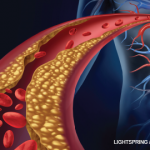Results
The primary outcome (APTC) occurred in 2.3% of celecoxib-treated patients (n=188), 2.5% of the naproxen-treated patients (n= 201), and 2.7% of the ibuprofen-treated patients (n=218). In the on-treatment population, the primary outcome (APTC) occurred in 1.7% of the celecoxib-treated patients (n=134), 1.8% of the naproxen-treated patients (n=144) and 1.9% of the ibuprofen-treated patients (n=155). Hazard ratios were: 0.90 for celecoxib vs. naproxen; 0.81 for celecoxib vs. ibuprofen (P<0.001 for non-inferiority); and 1.12 for ibuprofen vs. naproxen. When celecoxib was compared with either ibuprofen or naproxen, it met all four of the prespecified noninferiority requirements.
The event rate for the composite outcome of serious GI events was lower in the celecoxib group than in the naproxen-treated patients (0.71) or the ibuprofen-treated patients (0.65). Serious renal events occurred at a lower rate in celecoxib-treated patients than in ibuprofen-treated patients (HR, 0.61), but the rate did not significantly differ from naproxen-treated patients (HR, 0.79). Hypertension hospitalization was lower for celecoxib-treated patients than for ibuprofen-treated patients, but not for naproxen-treated patients. For pain assessment, a significant, but small, advantage was identified for naproxen vs. celecoxib or ibuprofen.
In summary, because higher doses of celecoxib were not studied, the data cannot be extrapolated to other, higher doses. In addition, only two non-selective NSAIDs were compared, so the same holds true for data extrapolation. These data show that at moderate doses, celecoxib was found to be noninferior with respect to cardiovascular safety compared with ibuprofen or naproxen. Use of celecoxib also led to fewer GI events than either NSAID, and fewer renal adverse events compared with ibuprofen.
Michele B. Kaufman, PharmD, BCGP, is a freelance medical writer based in New York City and a pharmacist at New York Presbyterian Lower Manhattan Hospital.
References
- Brune K, Hinz B. The discovery and development of antiinflammatory drugs. Arthritis Rheum. 2004 Aug;50(8):2391–2399.
- U.S. Food & Drug Administration. FDA Public Health Advisory: Safety of Vioxx. 2004 Sep 30.
- U.S. Food & Drug Administration. Information for healthcare professionals: Valdecoxib (marketed as Bextra). 2005 Apr 7.
- U.S. Food & Drug Administration. FDA announces series of changes to the class of marketed non-steroidal anti-inflammatory drugs (NSAIDs). 2005 Apr 7.
- Pfizer. Advisory committee briefing document: Assessment of cardiovascular safety in non-steroidal anti-inflammatory drugs (NSAIDs). 2014 Feb 10–11.
- Nissen SE, Yeomans ND, Solomon DH, et al. Cardiovascular safety of celecoxib, naproxen, or ibuprofen for arthritis. N Engl J Med. 2016 Nov 13; doi: 10.1056/NEJMoa1611593


